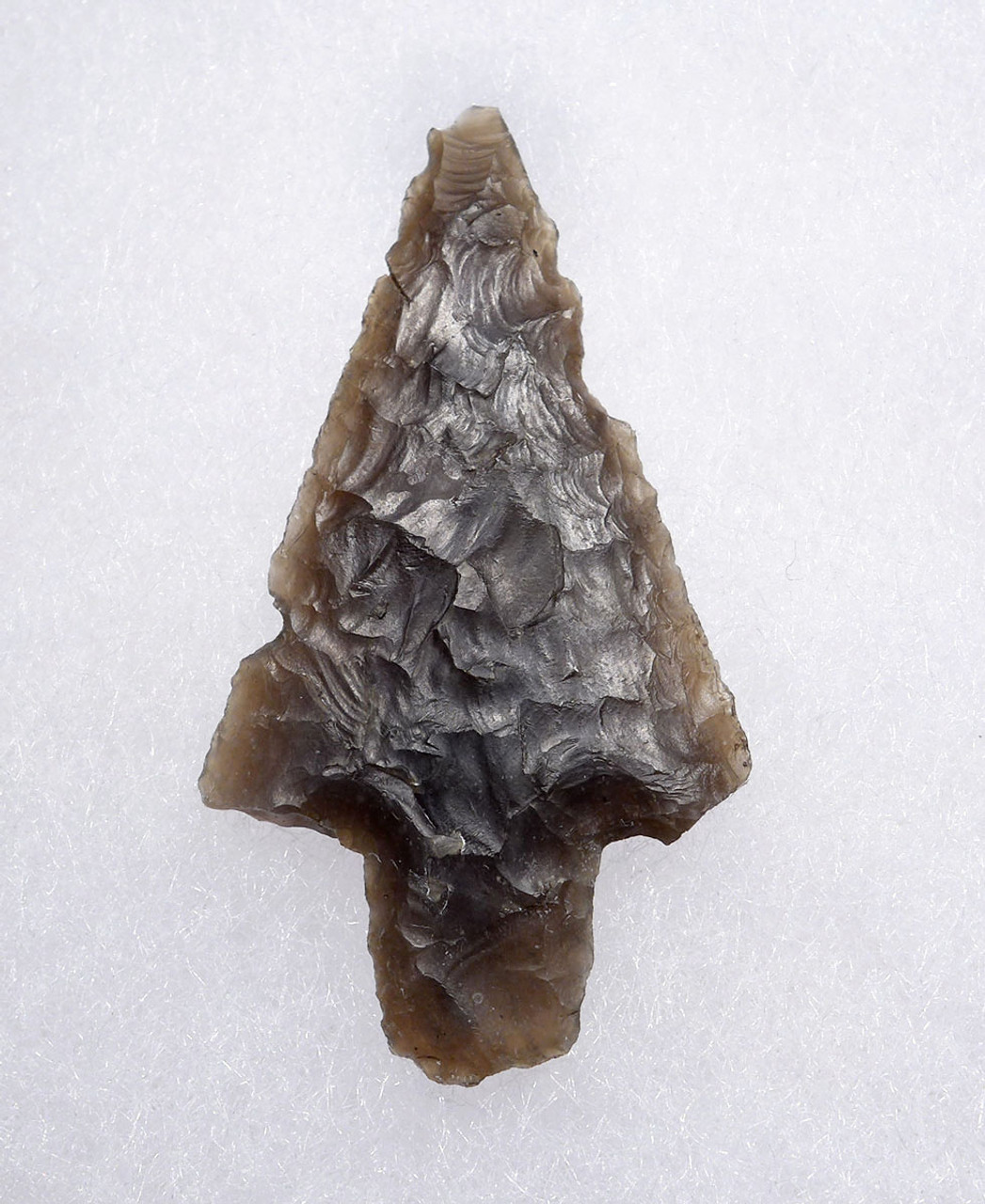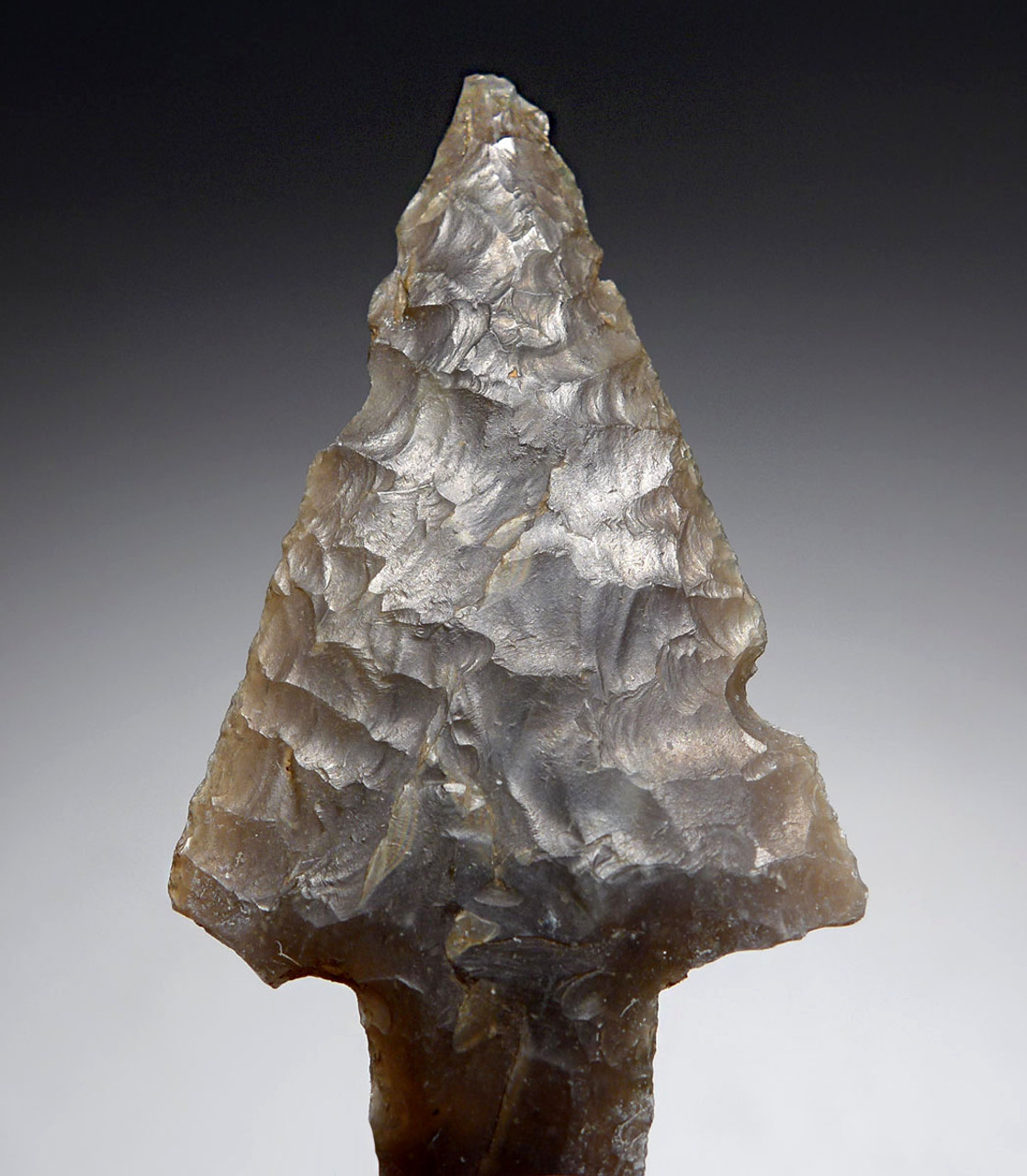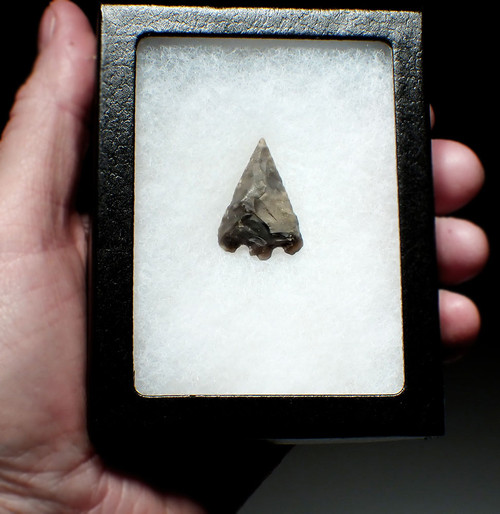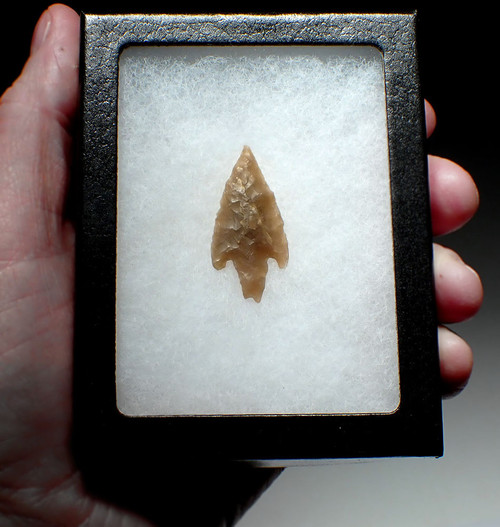Product Description
SEE MORE EUROPEAN BRONZE AGE ARTIFACTS
One of the rarest flint artifacts of the European Neolithic, Chalcolithic and Bronze Ages, are arrowheads. Their diminutive size and fragile nature make them difficult to find, even in fragmented condition. European flint arrowheads are rarely, if ever seen on the private market. Made of flint and of a very thin bifacial design, this Bell Beaker Culture arrowhead dates to the European Bronze Age. It is a very rare opportunity to acquire an exceptionally fine bifacial example that is complete as this is. Expertly flaked to a very thin cross-section, this remarkable tanged example shows very minor use wear on the tip and side cutting edges. It is the only Bell Beaker arrowhead we have to offer and was acquired years ago from an old private Dutch collection. Coming from continental Europe, this arrowhead dates from 2800 BC to 2300 BC. It was being used when copper and bronze was first being utilized.
Original ground minerals and sediment are still intact in hinge fractures - an indicator ONLY seen in AUTHENTIC specimens. Genuine tools from the Bell Beaker Pottery Culture represent an excellent opportunity to acquire a artifacts from some of the Europe's earliest metal societies where stone was still being used as the introduction of copper and bronze began to dominate tool technology.
HISTORY
The Bell Beaker culture, also known as the Bell Beaker complex or Bell Beaker phenomenon, is an archaeological culture named after the inverted-bell beaker drinking vessel used at the very beginning of the European Bronze Age, arising from around 2800 BC. Bell Beaker culture lasted in Britain from c. 2450 BC, with the appearance of single burial graves, until as late as 1800 BC, but in continental Europe only until 2300 BC, when it was succeeded by the Unetice culture. The culture was widely dispersed throughout Western Europe, being present in many regions of Iberia and stretching eastward to the Danubian plains, and northward to the islands of Great Britain and Ireland, and was also present in the islands of Sardinia and Sicily and some coastal areas in north-western Africa. The Bell Beaker culture was partly preceded by and contemporaneous with the Corded Ware culture, and in north-central Europe preceded by the Funnelbeaker culture.
In its early phase, the Bell Beaker culture can be seen as the western contemporary of the Corded Ware culture of Central Europe. From about 2400 BC the Beaker folk culture expanded eastwards, into the Corded Ware horizon. In parts of Central and Eastern Europe, as far east as Poland, a sequence occurs from Corded Ware to Bell Beaker. This period marks a period of cultural contact in Atlantic and Western Europe following a prolonged period of relative isolation during the Neolithic.
In its mature phase, the Bell Beaker culture is understood as not only a collection of characteristic artifact types, but a complex cultural phenomenon involving metalwork in copper and gold, long-distance exchange networks, archery, specific types of ornamentation, and (presumably) shared ideological, cultural and religious ideas, as well as social stratification and the emergence of regional elites. A wide range of regional diversity persists within the widespread late Beaker culture, particularly in local burial styles (including incidences of cremation rather than burial), housing styles, economic profile, and local ceramic wares (Begleitkeramik).
 US DOLLAR
US DOLLAR
 EURO
EURO
 AUSTRALIAN DOLLAR
AUSTRALIAN DOLLAR
 CANADIAN DOLLAR
CANADIAN DOLLAR
 POUND STERLING
POUND STERLING
























